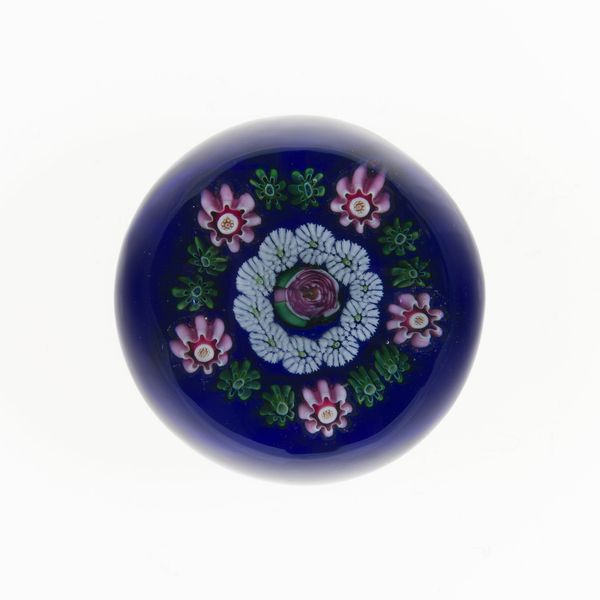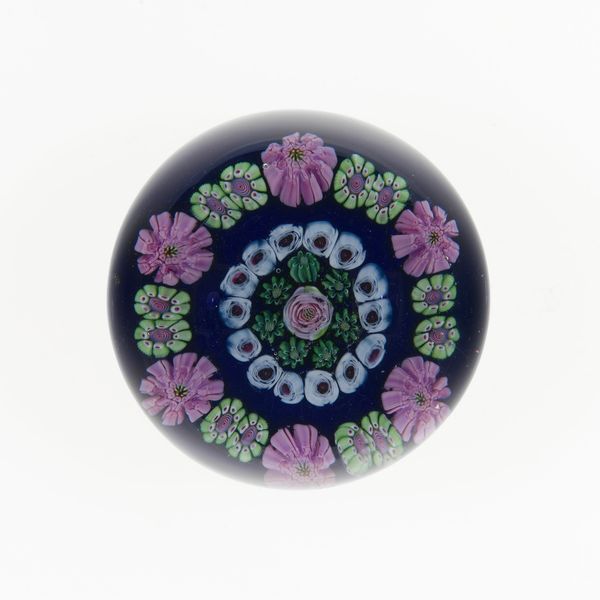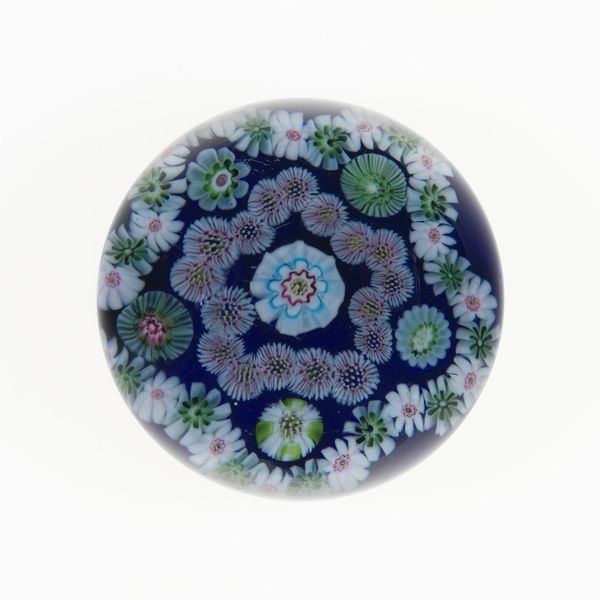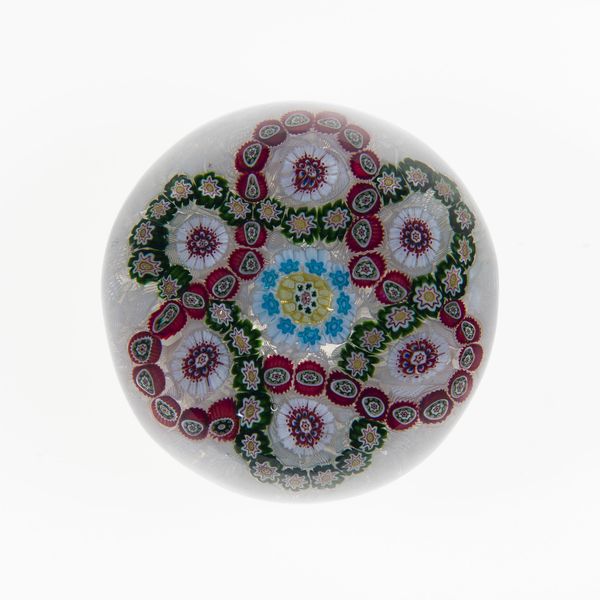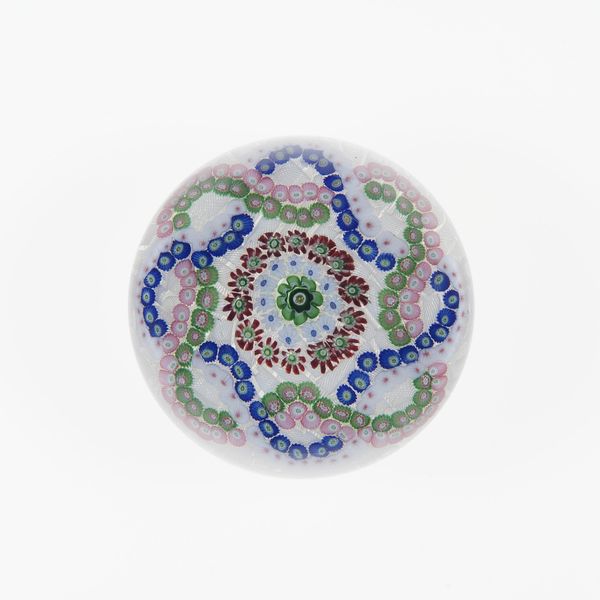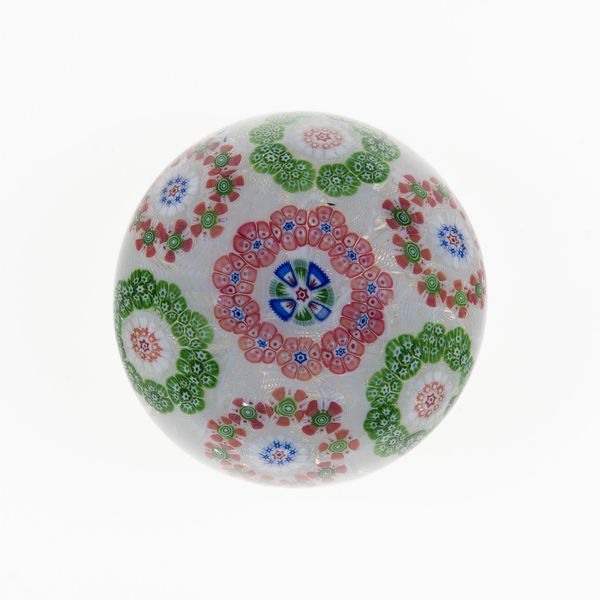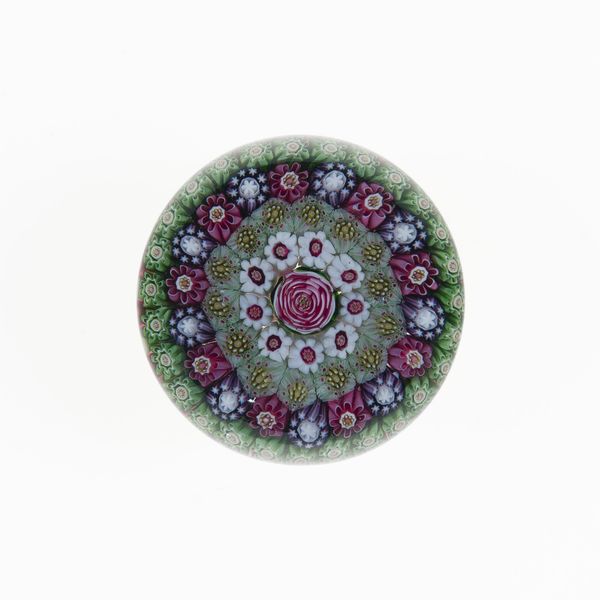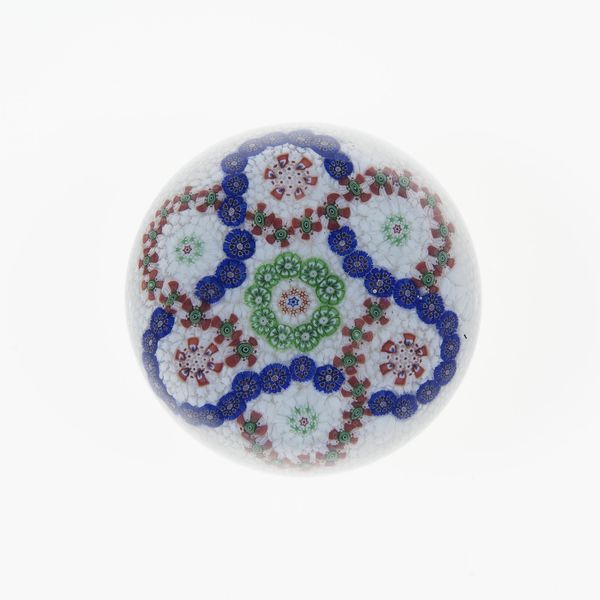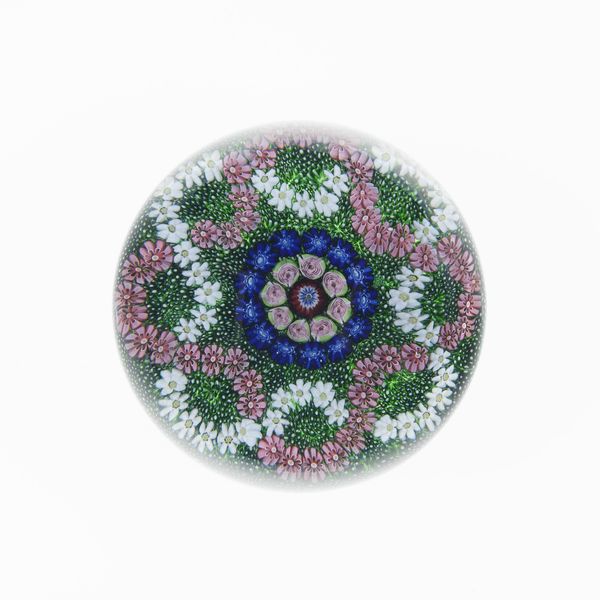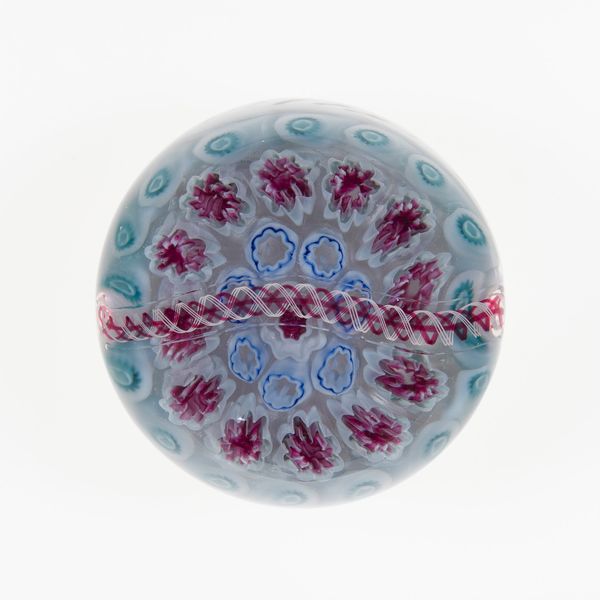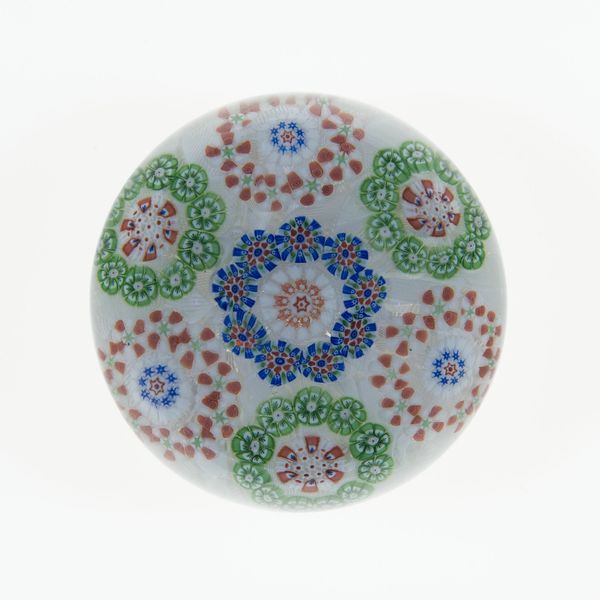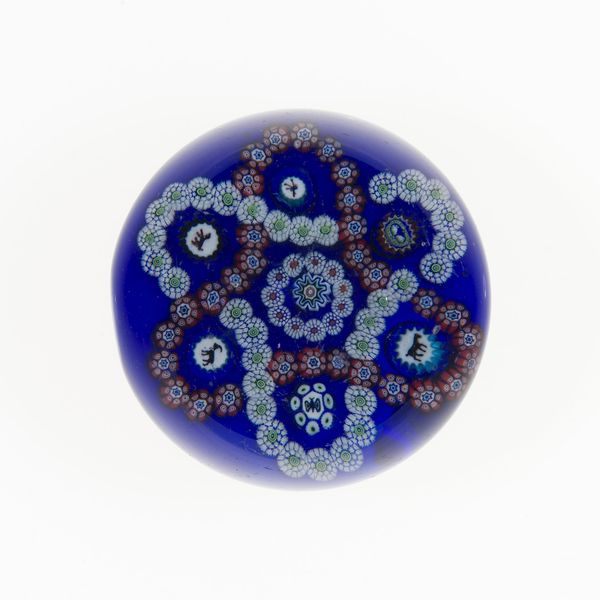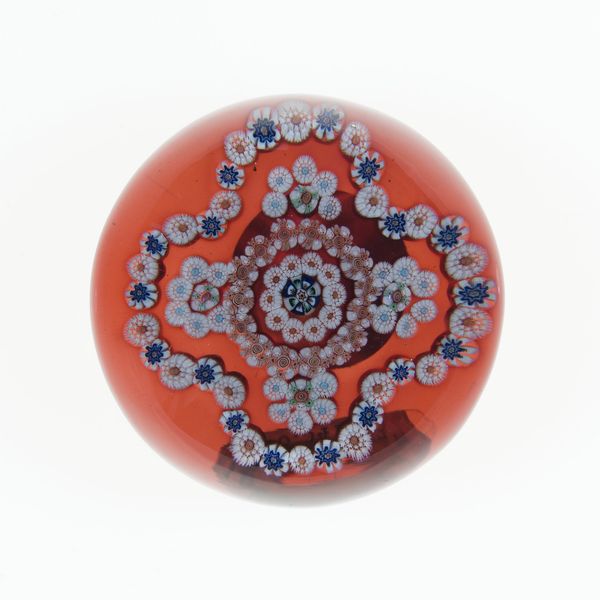
Dimensions: Diam. 7.3 cm (2 7/8 in.)
Copyright: Public Domain
This paperweight was made by the Clichy Glasshouse in France, sometime between 1837 and 1885. Glass paperweights were luxury objects, popular among the rising middle class in Europe and America. Embedded in clear glass are complex arrangements of tiny glass canes, heated, stretched, and cut into segments, which are then arranged to create floral patterns. The effect is of a miniature, self-contained world. Clichy was one of the most celebrated French glasshouses, known for its millefiori, or "thousand flowers," designs. But these glasshouses were also businesses, employing many workers under strict hierarchies. The designers and artisans who created these objects were often anonymous, their individual contributions subsumed into the brand. The intense detail and refined symmetry catered to the Victorian taste for order and control, reflecting a broader cultural desire to classify and contain the natural world. By looking into company records and other historical sources, we can better understand the complex social and economic forces that shaped this beautiful, yet humble object.
Comments
No comments
Be the first to comment and join the conversation on the ultimate creative platform.
